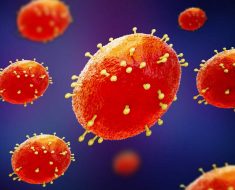In a recent study published in the journal Frontiers in Pediatrics, researchers described the protocol of a prospective clinical study called NUTRISHIELD, being conducted in the Spanish-Mediterranean region, which involved mother-infant birth cohorts and compared the percentage weight gained per month in preterm and term infants that were exclusively fed their own mother's milk (OMM) or pasteurized milk from a human donor (DHM).
 Study: Fact-based nutrition for infants and lactating mothers—The NUTRISHIELD study. Image Credit: HTeam / Shutterstock
Study: Fact-based nutrition for infants and lactating mothers—The NUTRISHIELD study. Image Credit: HTeam / Shutterstock
Background
The World Health Organization (WHO) recommends that mothers breastfeed their term or preterm infants until the age of six months since the bioactive compounds, microbiota, and nutrients in human milk are essential for the infant's growth and immunity. Advancements in medical science have also increased the survival chances of infants born early during the gestation period or with low-birth weight. Furthermore, the number of preterm deliveries (earlier than 37 weeks) has also increased in the last decade. This has resulted in an increased interest in early infant nutrition since complications associated with preterm birth are one of the prevalent causes of mortality among children below the age of five years.
Pasteurized DHM is recommended instead of formula in cases where the mother produces insufficient amounts of milk to breastfeed the infant partially or exclusively. However, the availability of DHM is limited, and various studies have reported that despite providing bioactive compounds, infants fed on DHM have slower growth rates than those fed on OMM. Since DHM is generally provided by women several months after a term delivery and in the later stages of lactation, DHM is thought to have a lower content of fat, proteins, and other nutrients as compared to OMM. While there is evidence to support the benefits of using DHM over formula for preterm infants, studies comparing the benefits of DHM and OMM are few.
Study protocol
The present study is a non-randomized, parallel-group, observational clinical study called NUTRISHIELD, which examines preterm and term infants, their mothers for the period spanning the first two years of the infant's life, as well as mothers who had donated human milk. The study comprises three groups of mother-infant dyads — preterm infants fed with OMM and their mothers, preterm infants fed with DHM and their mothers, and term infants fed with OMM and their mothers. Human milk donors were recruited during their visits to the human milk bank at the hospital.
The inclusion criteria consist of a gestational age of less than 32 weeks for preterm infants and more than 37 weeks for term infants and the exclusive consumption (greater than 80% of total milk intake) being either DHM or OMM at the time of complete enteral nutrition point for preterm infants. Participant pairs were excluded if they did not comply with the inclusion criteria, the mother was required to consume probiotics or a specialized diet, or the infant had chromosomopathies, congenital malformations, or required intestinal surgery.
Biological samples such as cord blood, urine, buccal swabs, and fecal samples are collected from the mother and infants at birth and at various time points until six months from delivery. Human milk samples are also collected from lactating mothers and human milk banks before and after pasteurization. These biological samples are used for genome sequencing, microbiome analysis, untargeted metabolomic fingerprinting, and analyses of microbiome activity markers, nutrient biomarkers, macronutrients, oligosaccharides, steroids, vitamins, and fatty acid profiles. Additionally, human milk and urine samples are also used to quantify proteins, creatinine, phosphate, fatty acids, and pH.
Data comprising anthropometric measurements, dietary composition, sociodemographic information, psychosocial status, and lifestyle are collected using questionnaires. Additionally, the neurodevelopment of the infant was also assessed at the ages of six and 24 months. The questionnaire also registers the attitudes and concerns of the mothers about breastfeeding.
Conclusions
The study is ongoing in various participating institutions, and the data analyses are in progress. The results will be used to understand the impact of maternal nutrition, gestational age, body mass index, psychosocial status, and type of delivery on factors such as protein fat, macronutrient content, and the microbiome of human milk. In addition, the study aims to use various biological matrices to provide a longitudinal understanding of the mother-infant-microbiome triad, which will then be used to train machine-learning algorithms to provide dietary advice to lactating mothers through a user-friendly platform.
The findings will provide clarity on the interplay between human milk composition and microbiome and the development and physiology of infants, especially those born preterm and with low birth weight. This knowledge could help improve vulnerable preterm infants' survival chances and outcomes.
- Vaya, María, et al. "Fact-Based Nutrition for Infants and Lactating Mothers—The NUTRISHIELD Study." Frontiers in Pediatrics, vol. 11, 2023, https://doi.org/10.3389/fped.2023.1130179, https://www.frontiersin.org/articles/10.3389/fped.2023.1130179/full
Posted in: Child Health News | Medical Research News | Women's Health News
Tags: Birth Weight, Blood, Body Mass Index, Breastfeeding, Children, CLARITY, Creatinine, Diet, Fatty Acids, Genome, Hospital, immunity, Microbiome, Mortality, Nutrients, Nutrition, Pediatrics, pH, Physiology, Probiotics, Protein, Surgery, Vitamins
.jpg)
Written by
Dr. Chinta Sidharthan
Chinta Sidharthan is a writer based in Bangalore, India. Her academic background is in evolutionary biology and genetics, and she has extensive experience in scientific research, teaching, science writing, and herpetology. Chinta holds a Ph.D. in evolutionary biology from the Indian Institute of Science and is passionate about science education, writing, animals, wildlife, and conservation. For her doctoral research, she explored the origins and diversification of blindsnakes in India, as a part of which she did extensive fieldwork in the jungles of southern India. She has received the Canadian Governor General’s bronze medal and Bangalore University gold medal for academic excellence and published her research in high-impact journals.
Source: Read Full Article





